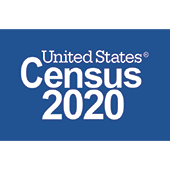The U.S. Census Bureau has released a downloadable toolkit geared toward helping local elected officials and community leaders plan a Response Rate Challenge for the 2020 Census. The new toolkit encourages leaders in every town, city and state to challenge their communities to improve upon their 2010 Census response rates in the upcoming national census.

| Highlights of the toolkit include: |
- Ideas and resources for creating a challenge, a 2020 Census timeline, example challenges, promotional materials and templates and general information about the 2020 Census.
- Information on how communities can use an interactive Self-Response Rate Map on 2020census.gov to look up their 2010 Census response rates, set a goal for their challenge and monitor their progress as people begin responding in mid- to late March.
- Inspiration for communities to challenge each other in a friendly competition (i.e., city vs. city or state vs. state) and how to work with local businesses, partners and media to promote the challenge and motivate people to respond on their own as soon as they can.
The 2020 Census Response Rate Challenge will be a key element to connecting the importance of the 2020 Census to individual communities. The challenge will give local leaders an opportunity to educate people about how they can shape their future.
Help us spread the word about the 2020 Census
The 2020 Census is more than a population count. It’s an opportunity to shape the future of your community. Through your social media channels, your voice can make a difference. Share this on social media or forward it to a friend.
About the 2020 Census
The U.S. Constitution mandates a census of the population every 10 years. The 2020 Census will count everyone who lives in the U.S. as of April 1, 2020. Census statistics help determine the number of seats each state holds in the U.S. House of Representatives and how billions of dollars in federal funds will be allocated by state, local, and federal lawmakers every year for the next 10 years. Beginning in mid-March, households can respond to the census online or by phone. Additionally, about one-quarter of households will receive a follow-up paper questionnaire at that time. Beginning in mid-April, households that have not responded will receive a paper questionnaire.



